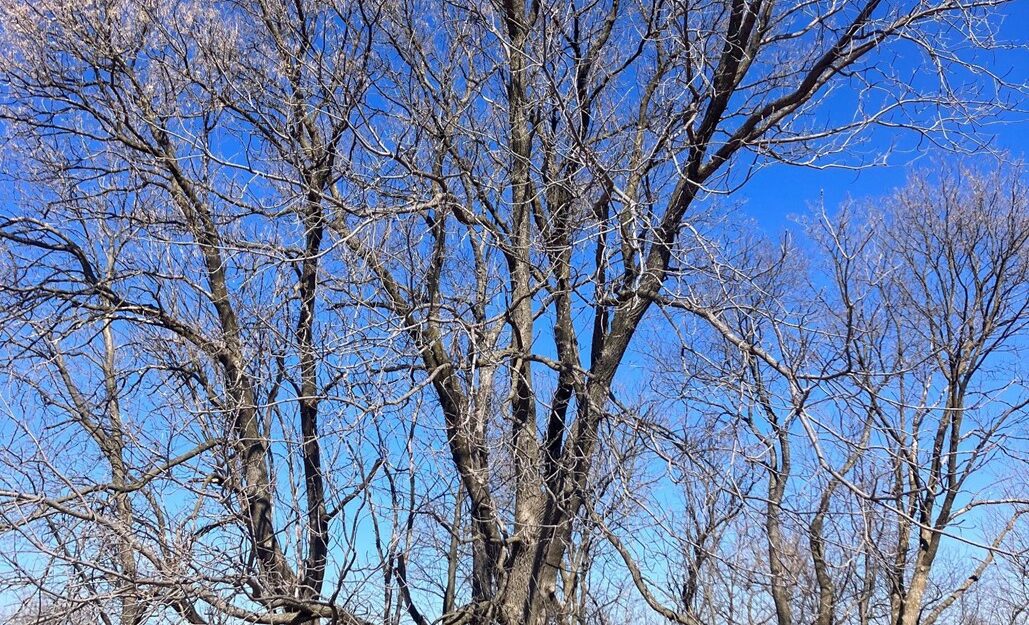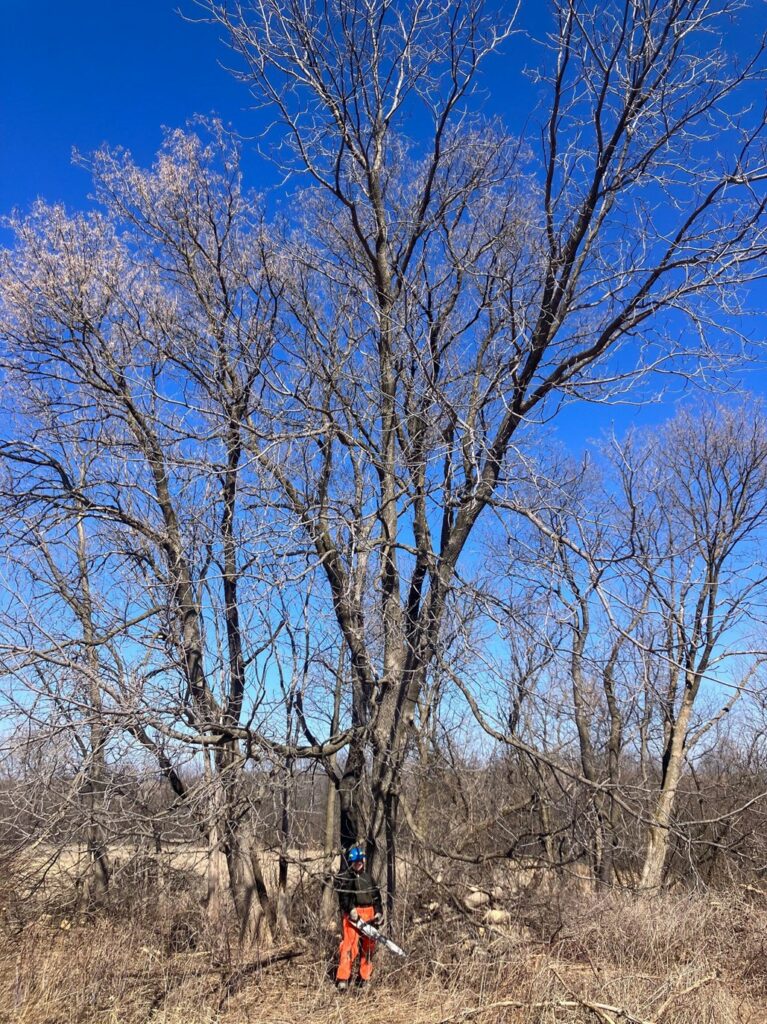My First Fell

by Marie Johnson, Southern Minnesota Field Specialist / AmeriCorps Member
It’s a brisk sunny day in late January, and I’m preparing to fell my first tree. It’s my first year in the Corps, and I am decidedly not a lumberjack (not yet, anyways…). I’m learning how to be a conservationist. This work is not completely unfamiliar to me: at heart I’m a naturalist and an outdoor educator (among many other things: reader, artist, friend, amateur herbalist, lover of small animals and flowers and the smell of the forest after rain).
I spent my early naturalist and outdoor education career in the Northeast, building outdoor forts with my students among groves of mountain laurel trees, flipping over rotting logs to look for red-backed salamanders, playing in streams trickling through woods full of witch hazel, sassafras, white oak, sugar maples, and beech trees. I’ve always loved trees and their many intricate details: the bark patterns, the interesting gnarled roots, the y-shaped crevices between large branches where leaves gather. As a child, I would crane my neck up at the tallest tree on my block, skimming my eyes over bird nests, tracing the canopy. I would wonder: how old are you? What have you seen? What stories do you have? I would try to wrap my arms around the tree, flattening my body against the trunk, straining to meet my hands together on the other side.
But today, on this clear wintry day in southeast Minnesota, my objective is not to hug the trees in front of me. Aspen stands, walnuts, cherry trees, and cedars are crawling into the prairie, and my objective is to scale back these trees in order to connect patches of prairie back together. In scaling back these trees, I am carving out room for native grasses, sedges, and flowers; and with these native plants, in come prairie voles, badgers, and mice, along with hog-nosed snakes, western meadowlarks, burrowing owls, and pheasants. Oh my, and the pollinators! Midwestern prairies are home to rusty-patched bumblebees, monarchs, skippers, fritillaries, and more! In clearing these trees today, I am helping to restore the ecological balance of the prairie.
I walk around the aspens, walnuts, and cherries, studying them to identify which tree will be the first one that I fell. As I learned in my chainsaw training, the basics of safely cutting down a tree are described in the acronym OHLEC, which stands for: Objective, Hazard, Lean, Escape Routes, and Cut Plan. I use these guidelines, along with a realistic and humble assessment of my skill level, to find the perfect tree: she’s a stout cedar, living at the edge between forest and prairie, soaking up the bountiful sun. And she is beautiful. I feel a pang of guilt as I prepare to cut her down, but then I remember how this cedar tree can provide us with the gift of so many native plants, animals, and pollinators. Come summertime, the space that this cedar tree occupied will be filled with the delicious sights, sounds, and smells of a healthy prairie. I thank this cedar for her hard work and the gift of life that she provides, and I start my saw.
